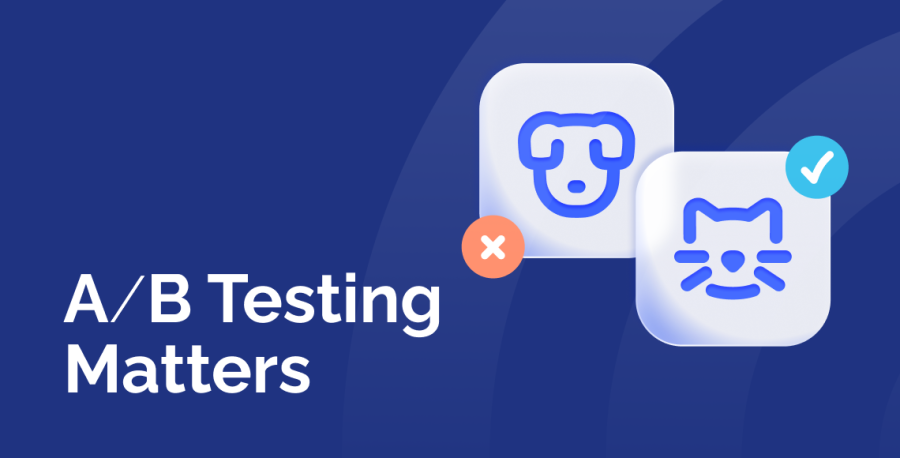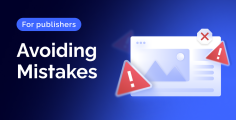We all know what the A/B testing is about, more or less. And while sometimes the marketers might feel tired of this routine, there is no better way to make well-calculated decisions. And while we are not able to provide you a more engaging alternative, we can try to spur your inspiration and explain why A/B testing is important and worth every minute sacrificed on it. Read on the article to learn about the essence of A/B testing, what can be tested, how to test properly, and why bother in the first place. Test your knowledge and compare how much of the information is already known to you!
The Essence of A/B Testing
Have you ever wondered whether a half-full glass of water is partially filled or partially emptied? Depending on how you present a certain phenomenon to the audience, you will get different results — that’s what they call the framing effect. This effect alone can make your campaigns a blast or bust.
Knowing how to frame your ads properly is the key to success, but how do you learn? The answer is A/B testing, a.k.a. split-testing. It is a simple method of comparing two possible alternatives head-on. These alternatives can include various layouts, color schemes, languages & dialects, texting, funnel stages, and even verticals — you can compare the items of any scale.
- Establish a homogenous testing audience and split it
- Present a different alternative to each group
- Collect the results
- Compare them against one another to come to a certain conclusion
- Make data-driven decisions in the future.
For the test to accurately represent a real-life phenomenon, you need a bunch of things. First off, make sure your audience is homogenous, so that only the change to your testing object matters.
Alternatively, change your object to be the audience itself, but do not alter anything else! Remember, two variables might have an intrinsic correlation, which is why a change to any of them affects the second one too. Hence, it is discouraged to test more than a single variable, e.g., a website layout + color scheme.
Your testing audience has to be large enough for the results to be credible, a.k.a. statistically significant. When you throw a coin and get a tail, it does not automatically imply that all the coins are tail-biased. It’s just your number of test-runs is inadequate to come to any conclusions. Use special tools, like VWO, to check if your results hold any significance.
Here is an incomplete list of advantages of split-testing:
- Greater user engagement
- Improved content quality
- Reduced bounce rate
- Higher conversion rate
- Simple analysis of the results
- Relatively quick results
- Limitless testing objects
- Less risk, thanks to data-driven decisions
- Lowered cart abandonment
- Just better sales!
What to Test and How Frequently?
Let’s start with the latter point, by saying that ideally, you should be A/B testing all the time. On a more realistic note, test as often as you can. Just make sure to set up your goals clearly, before commencing the test, so that you stick to the initial plan. What exactly can be A/B tested?
- Push notification creatives
- Calls-to-Action
- Images
- Landing pages
- Publication time
- Social media posts
- etc
Keep in mind that people have bounded rationality, meaning they are perfectly rational within their specific span of knowledge. Which is why it is difficult to predict how your audience will react to a certain change in your funnel. Take for example the “InMyFeelings” challenge, when people get out of (sometimes moving) cars to dance and show off their result online. Instead of proclaiming it to be reckless driving, the viewers find it to be inspiring and trendy.
What we are trying to convey here is that your hunch can be wrong when designing a campaign. The more factors you have to account, the more likely it is to make a mistake. A/B testing eases the burden and helps to aggregate a lot of homogenous data. By processing this batch of big data, you minimize your risks of making a mistake. A/B testing does not guarantee a success, but it is the best method so far for predicting the future outcome without costing an arm and a leg.
How to Perform the A/B Test?
The very general algorithm has been given in the first section of the article. Let’s get into a more practical side of the matter.
- Find a test object: a landing page
- Come up with a hypothesis: adding a social proof element, like customers’ pictures, will make the lander more credible and improve the conversion rate and sales
- Create two versions of the test object: a default landing page and a page with customers’ testimonials (or more than two with the help of Multi Creatives feature)
- Check for statistical significance: learn how many tests you need to run before considering your results to be valid and not a coincidence
- Split your audience and show a different version to each group: make sure the audience is homogenous
- Collect and process the results: time to figure out the top-performer!
- Profit! …and test something else
What should you look for, when running the tests, using the algorithm above:
Pick the most beneficial potential changes: i.e., find out something that is easy to change and delivers a huge impact. Among such crucial components are headlines — take your time to craft a succinct one.
Address the pitfalls: test not what you like but what suffers the most in terms of performance. Optimizing these spots makes the biggest impact.
If it works, don’t mess with it: this point solidifies the previous one, instead of risking breaking something that already works, go for the vague spots, which appear to drag you down.
Distance A from B as far as possible: try to come up with the most distant alternatives for the effect to be the most noticeable. An addition of comma won’t make a big impact, focus on rephrasing the whole piece of text. Use ChatGPT if needed.
Include every help imaginable: you won’t generate a lot of ideas for testing on your own. Consider the customers’ feedback, fellows’ suggestions, various articles — any source you can come up with.
Conduct parallel tests only: one of the variables to control is the time, unless it is your test object. Sequential tests are bad, because time there is out of your control. Settle for testing phenomena in real time whenever possible.
Test at least for a week: to avoid hitting the traffic peaks or pits, it is best to run prolonged tests, so that you can be confident in your results. Think about it, right before the Thanksgiving Day most of the turkeys are sold out. But will the trend persist afterward?
Just keep testing: it might sound as a mockery, but beginning the tests when you’re at your all-time low is easier than when you are winning. Don’t let the short-term success blind you and keep on testing even after getting out of your troubles.
Conclusion
That’s it, ladies and gents. Hopefully, we have succeeded in explaining why A/B testing is so important for minimizing one’s risks. This type of test is easy to conduct, it delivers the results quickly, they don’t cost much, and allow making well-informed decisions. All you have to do is to give up on your vanity and diligently do your daily affiliate marketing routine. Much like with the gym, it pays off to do A/B testing on a regular basis in the long run.





